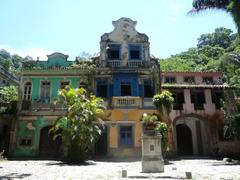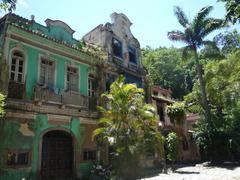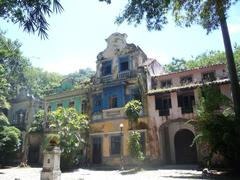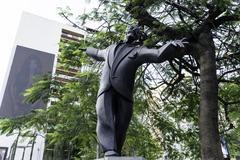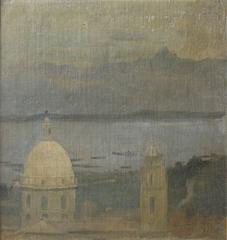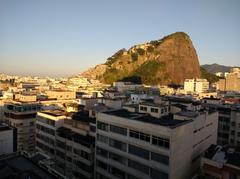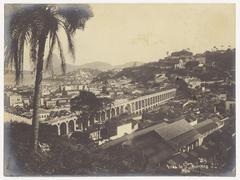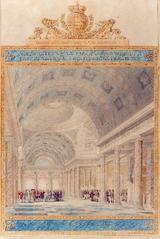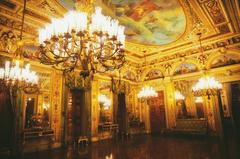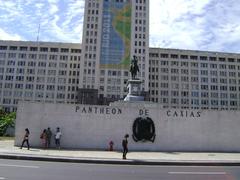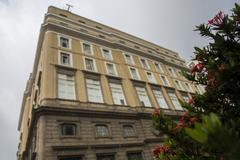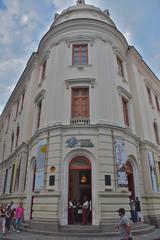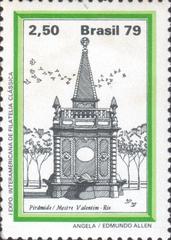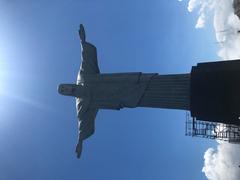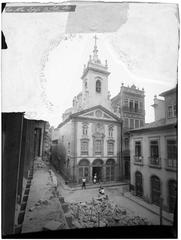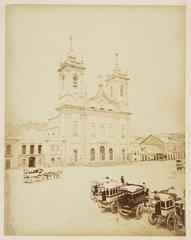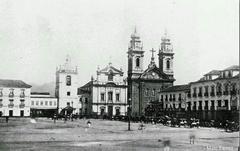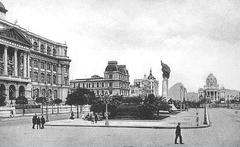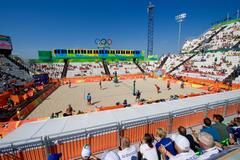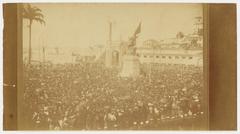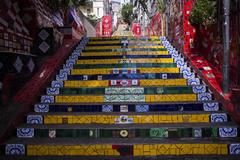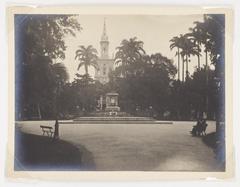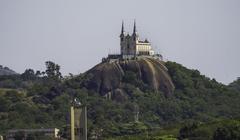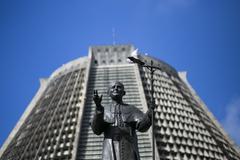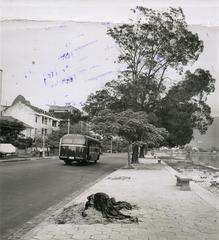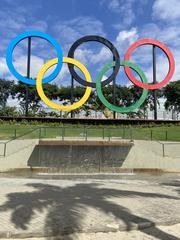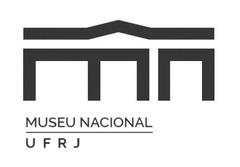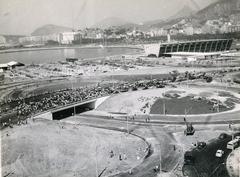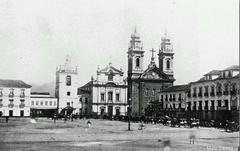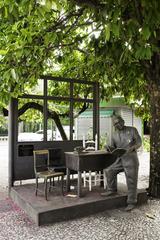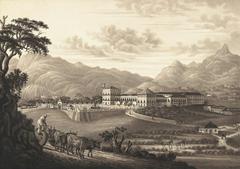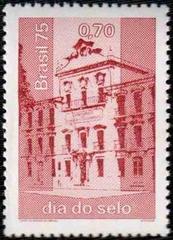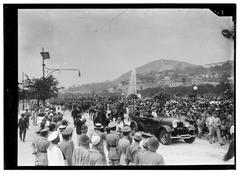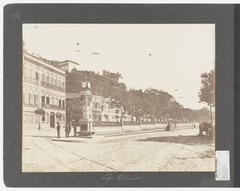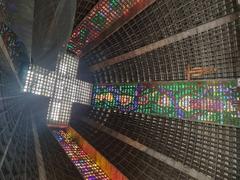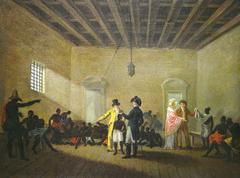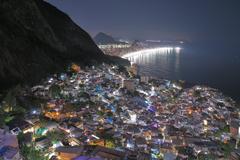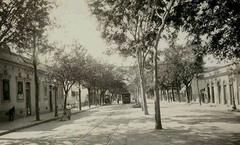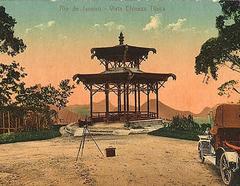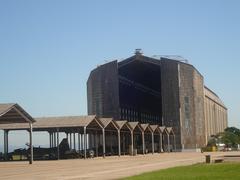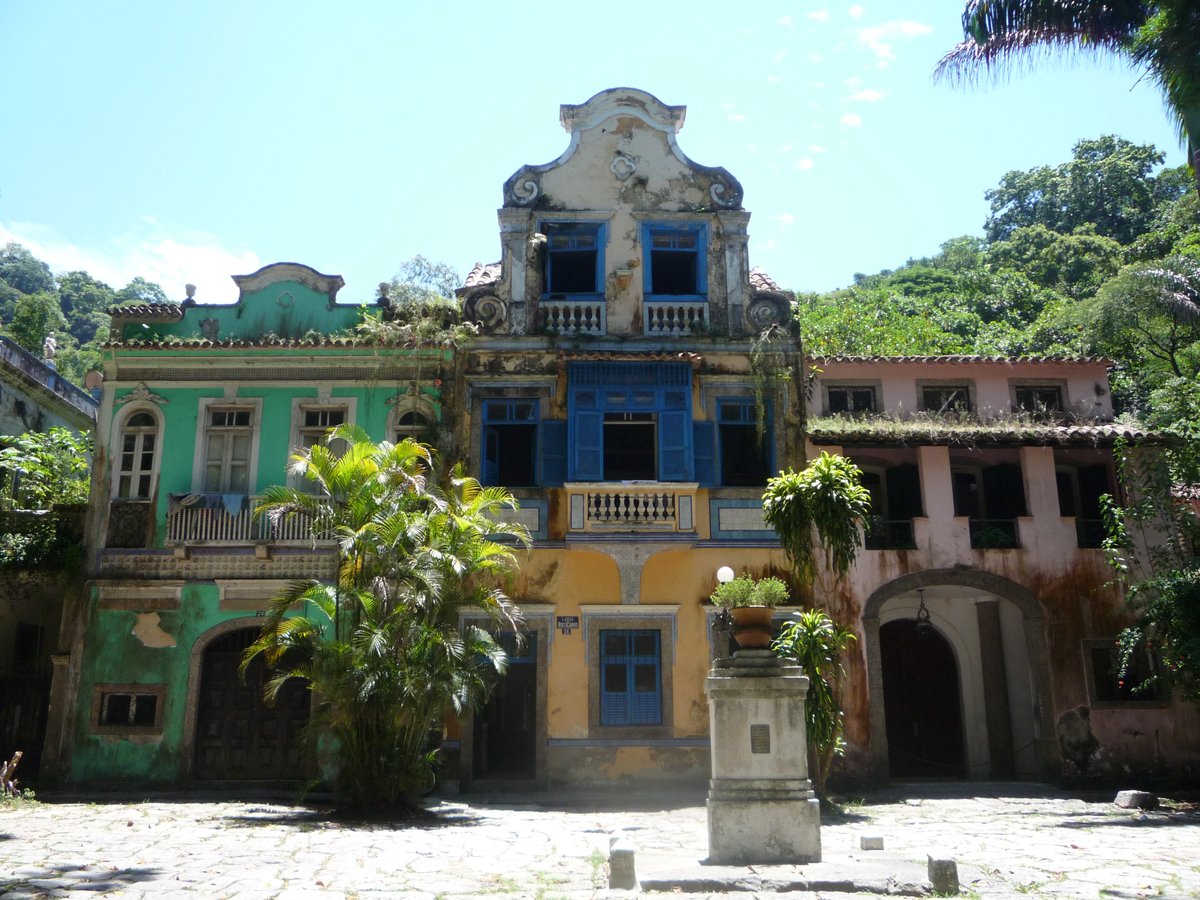
Largo do Boticário Visiting Guide: History, Tickets, and Travel Tips
Date: 23/07/2024
Introduction
Largo do Boticário, situated in the Cosme Velho neighborhood of Rio de Janeiro, Brazil, is a captivating historical square renowned for its colonial and neocolonial architecture, lush green surroundings, and cultural significance. This historical gem dates back to the early 19th century when it was part of an estate owned by Joaquim Luís da Silva Souto, a prominent pharmacist. The square’s name, Largo do Boticário, translates to ‘Square of the Pharmacist’ in Portuguese, reflecting its origins (Rio.com). The area is characterized by its vibrant colonial-style houses, featuring intricate woodwork, wrought iron balconies, and colorful facades, making it a popular spot for photography and cultural events. Over the years, Largo do Boticário has served as a cultural hub, attracting artists, writers, and intellectuals, and has been featured in various films and TV shows, most notably in the 1979 James Bond film ‘Moonraker’ (IMDb). Despite facing periods of neglect, restoration efforts by the Brazilian Institute of Historical and Artistic Heritage (IPHAN) have helped preserve its historical and architectural significance (IPHAN). Today, Largo do Boticário stands as a testament to Rio de Janeiro’s rich cultural heritage and offers visitors a unique blend of history, architecture, and natural beauty.
Table of Contents
- [History and Development](#history-and-developmenthistory-and-development)
- [Origins and Early Development](#origins-and-early-developmentorigins-and-early-development)
- [Architectural Significance](#architectural-significancearchitectural-significance)
- [Decline and Restoration Efforts](#decline-and-restoration-effortsdecline-and-restoration-efforts)
- [Visitor Information](#visitor-informationvisitor-information)
- [Ticket Prices](#ticket-pricesticket-prices)
- [Opening Hours](#opening-hoursopening-hours)
- [Travel Tips](#travel-tipstravel-tips)
- [Nearby Attractions](#nearby-attractionsnearby-attractions)
- [Accessibility](#accessibilityaccessibility)
- [Cultural and Historical Importance](#cultural-and-historical-importancecultural-and-historical-importance)
- [Modern-Day Developments](#modern-day-developmentsmodern-day-developments)
- [Environmental and Ecological Aspects](#environmental-and-ecological-aspectsenvironmental-and-ecological-aspects)
- [Community Involvement and Future Prospects](#community-involvement-and-future-prospectscommunity-involvement-and-future-prospects)
- [Frequently Asked Questions (FAQ)](#frequently-asked-questions-faqfrequently-asked-questions-faq)
- [Conclusion](#conclusionconclusion)
- [References](#referencesreferences)
History and Development
Origins and Early Development
Largo do Boticário, located in the Cosme Velho neighborhood of Rio de Janeiro, Brazil, is a historic square known for its colonial architecture and lush surroundings. The area dates back to the early 19th century when it was part of a larger estate owned by Joaquim Luís da Silva Souto, a prominent pharmacist, or “boticário,” from whom the square derives its name. The term “boticário” is Portuguese for pharmacist, reflecting the profession of its original owner (Rio.com).
Architectural Significance
The square is renowned for its unique blend of architectural styles, primarily colonial and neocolonial. The buildings surrounding Largo do Boticário were constructed between the 19th and early 20th centuries. These structures feature traditional Portuguese colonial elements such as azulejos (ceramic tiles), wrought iron balconies, and wooden shutters. The neocolonial influence is evident in the ornate facades and the use of pastel colors, which were popular during the early 20th century (ArchDaily).
Decline and Restoration Efforts
By the mid-20th century, Largo do Boticário had fallen into disrepair. The once-vibrant area became neglected, and many of the buildings were abandoned. However, the square’s historical and architectural significance did not go unnoticed. In the 1970s, efforts to restore and preserve Largo do Boticário began to take shape. The Brazilian Institute of Historical and Artistic Heritage (IPHAN) recognized the area as a site of cultural importance and initiated restoration projects to revive its former glory (IPHAN).
Visitor Information
Ticket Prices
Visiting Largo do Boticário is free of charge, allowing tourists to explore its historic beauty without any entrance fee.
Opening Hours
Largo do Boticário is accessible to visitors 24/7. However, the best time to visit is during the daytime to fully appreciate the architectural details and lush surroundings.
Travel Tips
- Guided Tours: Consider joining a guided tour to learn more about the history and significance of Largo do Boticário.
- Photography: The square is a popular spot for photography, so bring your camera to capture its unique charm.
- Safety: While the area is generally safe, it’s always a good idea to visit during daylight hours and stay aware of your surroundings.
Nearby Attractions
- Christ the Redeemer: One of the most iconic landmarks in Rio, located just a short drive from Largo do Boticário.
- Tijuca National Park: Explore this vast urban forest, which is close to the square and offers hiking trails and stunning views.
- Museu Internacional de Arte Naif: A nearby museum showcasing a vast collection of naïve art.
Accessibility
Largo do Boticário is accessible by public transportation, including buses and the nearby Cosme Velho tram station. The area is pedestrian-friendly, but some of the cobblestone streets may present challenges for those with mobility issues.
Cultural and Historical Importance
Largo do Boticário holds a special place in Rio de Janeiro’s cultural and historical landscape. The square has been a backdrop for various cultural events, including film shoots and art exhibitions. Its picturesque setting and historical ambiance have made it a popular location for filmmakers. Notably, the square was featured in the 1979 James Bond film “Moonraker,” which showcased its unique charm to an international audience (IMDb).
Modern-Day Developments
In recent years, Largo do Boticário has seen renewed interest and investment. The area has become a focal point for urban revitalization projects aimed at preserving its historical integrity while promoting tourism and local commerce. The restoration of the buildings has been complemented by the development of new amenities, such as cafes, art galleries, and boutique shops, which attract both locals and tourists alike (Rio Times).
Environmental and Ecological Aspects
Largo do Boticário is not only significant for its architectural and historical value but also for its natural surroundings. The square is nestled within the lush greenery of the Tijuca Forest, one of the largest urban forests in the world. This unique setting provides a tranquil escape from the bustling city and offers visitors a chance to experience Rio de Janeiro’s rich biodiversity. The proximity to the forest has also influenced the area’s microclimate, making it a cooler and more pleasant environment compared to other parts of the city (Tijuca National Park).
Community Involvement and Future Prospects
The revitalization of Largo do Boticário has been a collaborative effort involving local residents, government agencies, and private investors. Community involvement has been crucial in preserving the area’s historical character while adapting to modern needs. Future prospects for Largo do Boticário include further restoration projects, enhanced public spaces, and increased cultural programming to ensure that the square remains a vibrant and integral part of Rio de Janeiro’s heritage (Rio Prefeitura).
Frequently Asked Questions (FAQ)
What are the visiting hours for Largo do Boticário?
Largo do Boticário is open to visitors 24 hours a day, but it is best visited during daylight hours.
How much are the tickets for Largo do Boticário?
There are no entrance fees for visiting Largo do Boticário.
Conclusion
Largo do Boticário stands as a testament to Rio de Janeiro’s rich history and cultural diversity. Its journey from a neglected square to a revitalized cultural hub highlights the importance of preserving historical sites for future generations. As efforts to restore and enhance Largo do Boticário continue, it remains a symbol of the city’s enduring charm and resilience. For more updates, follow our social media channels and check out related posts on our website.
